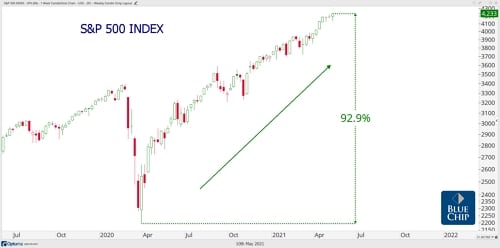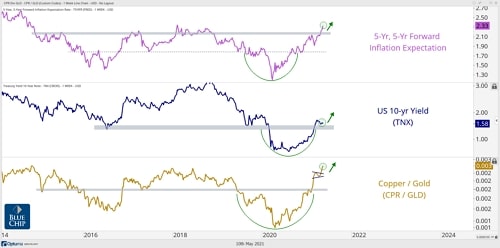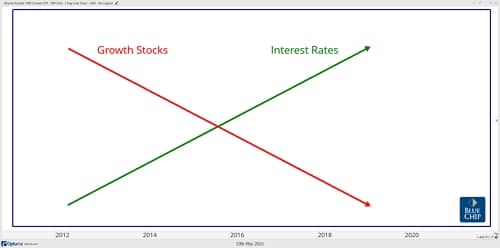The month of May kicks off the least profitable six-month stretch for stocks. That’s a nice way of saying the worst six-month period. Since 1950, May through October has averaged a measly 1.7% for stocks. The best rolling six-month period, from November through April, has averaged an impressive 7.1%. Given these historical facts, should we “Sell in May and go away”? The answer depends on who you ask.
One thing this industry has taught me is that an argument can generally be made on either side of any narrative (particularly if we mine the data hard enough). With the financial media’s bearish spin on “Sell in May and go away,” we wanted to dive deeper into how the perma-bulls were reacting. Here’s an interesting breakdown from one of my favorite data miners, Ryan Detrick at LPL:
- When April is up more than 5%, like it was this year, on average the next six months are up 6.2%. That’s well above the 1.7% average.
- Post-election years average 2.4% during this period.
- The best six months of the year just ended, and they gained nearly 28% this time around. It appears that big gains during these months can eat away at future returns. In fact, the next six months are up only 0.7% on average when the previous six months are up at least 20%.
- When the S&P 500 closes at a new monthly high in April, like it did this year, the next six months do much better, up 5.6%.
Putting it all together, the only other year in history to close April at a new monthly high, be up at least 20% during the previous six months, and do it all in a post-election year was in 1961. What happened in the next six months? The S&P 500 gained a very respectable 5.1%. The financial media won’t report on these types of bullish stats – they’re just not scary enough.
The Rally Can’t Continue At This Pace
The S&P 500 is up over 90% since the March 2020 lows. Few investors today have witnessed such an impressive 12-month run. While we remain bullish, we can’t reasonably expect the next 12 months to look like the last 12 months.

Keep in mind, managing our expectations in this manner doesn’t imply we’re building a bearish case. While the financial media will continue to report on the pending doomsday scenario, we’re seeing no evidence of an imminent correction at this time. “Risk Off” sectors like Utilities, Staples and Health Care continue to show weakness relative to the broader market.
Large price moves, like the bounce off the March 2020 lows, generally get digested in one of two ways:
1. Prices retreat back to fair value
2. Prices consolidate over time
While the former could happen, we expect the latter scenario. It would be completely normal for the market to take a healthy breather. In fact, this type of post-rally “consolidation” is very common in year two of multi-year bull market runs.
Higher Rates and Inflation
A number of NASDAQ stocks have released impressive earnings this quarter. Two examples include Apple and Alphabet (formerly Google), which surprised on the upside by crushing Wall Street estimates by 41.8% and 65.6%, respectively. Yet the growth-oriented NASDAQ Composite has struggled to keep pace. Shouldn’t big beats on the bottom line translate into higher stock prices? Not necessarily. Stocks are bought and sold based on what lies ahead, not on yesterday’s news.
Growth companies could now be facing the headwinds of higher rates and inflation. Let’s weigh the evidence:
1. The 5-Year, 5-Year Forward Inflation Expectation Rate, as measured by the St. Louis Fed, recently broke through key resistance of 2.20%.
2. The 10-Year Treasury continues to hold above key support at 1.45%.
3. The copper/gold ratio, which has consolidated over the last few months, resolved to the upside.

So, you tell me… Is the path of least resistance for rates and inflation higher or lower? As long as the three metrics above hold, we’re betting on the former. In that environment, investors should expect growth-oriented companies to underperform on a relative basis.
Don’t Sell, Rotate
The bears may decide to sell in May. The bulls might double down. That’s what makes investing so unique – beauty is in the eye of the beholder. Objectively, we think the market is due to consolidate sideways while rates and inflation go higher.
In a higher interest rate environment, future corporate earnings will be worth less in today’s dollar. Growth stocks will be particularly affected by this phenomenon, since they are judged more heavily on their prospects for future earnings growth. Future potential is how growth companies like Amazon and Tesla had soaring stock prices prior to ever turning a profit. Remember that?
Generally speaking, here’s how it should work:

With interest rate headwinds for growth-oriented companies, investors should focus on rotating their equity exposure this May. Instead of selling, we should be thinking in terms of “Rotate in May and Stay.”
Expressions of opinion are as of this date and are subject to change without notice. The information provided does not constitute tax, legal, accounting, or other professional advice and is without warranty as to the accuracy or completeness of the information. Any information provided is not a complete summary or statement of all available data necessary for making an investment decision and does not constitute a recommendation to buy, hold or sell any security. The information has been obtained from sources considered to be reliable, but we do not guarantee that the foregoing material is accurate or complete. There are limitations associated with the use of any method of securities analysis. Indices are included for informational purposes only; investors cannot invest directly in any index. Every investor’s situation is unique, and you should consider your investment goals, risk tolerance and time horizon before making any investment. Prior to making an investment decision, please consult with your financial advisor about your individual situation. Past performance does not guarantee future results. Investing involves risk and you may incur a profit or loss regardless of strategy selected. There is no guarantee that any statements, opinions or forecasts provided herein will prove to be correct.